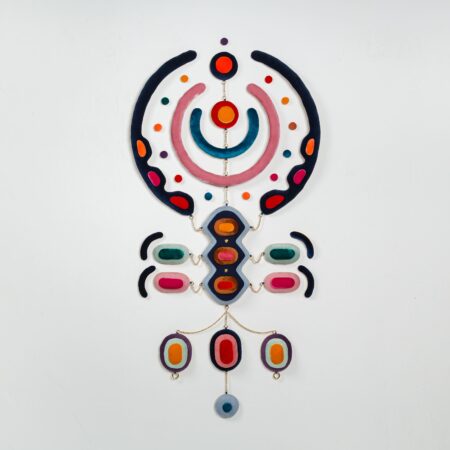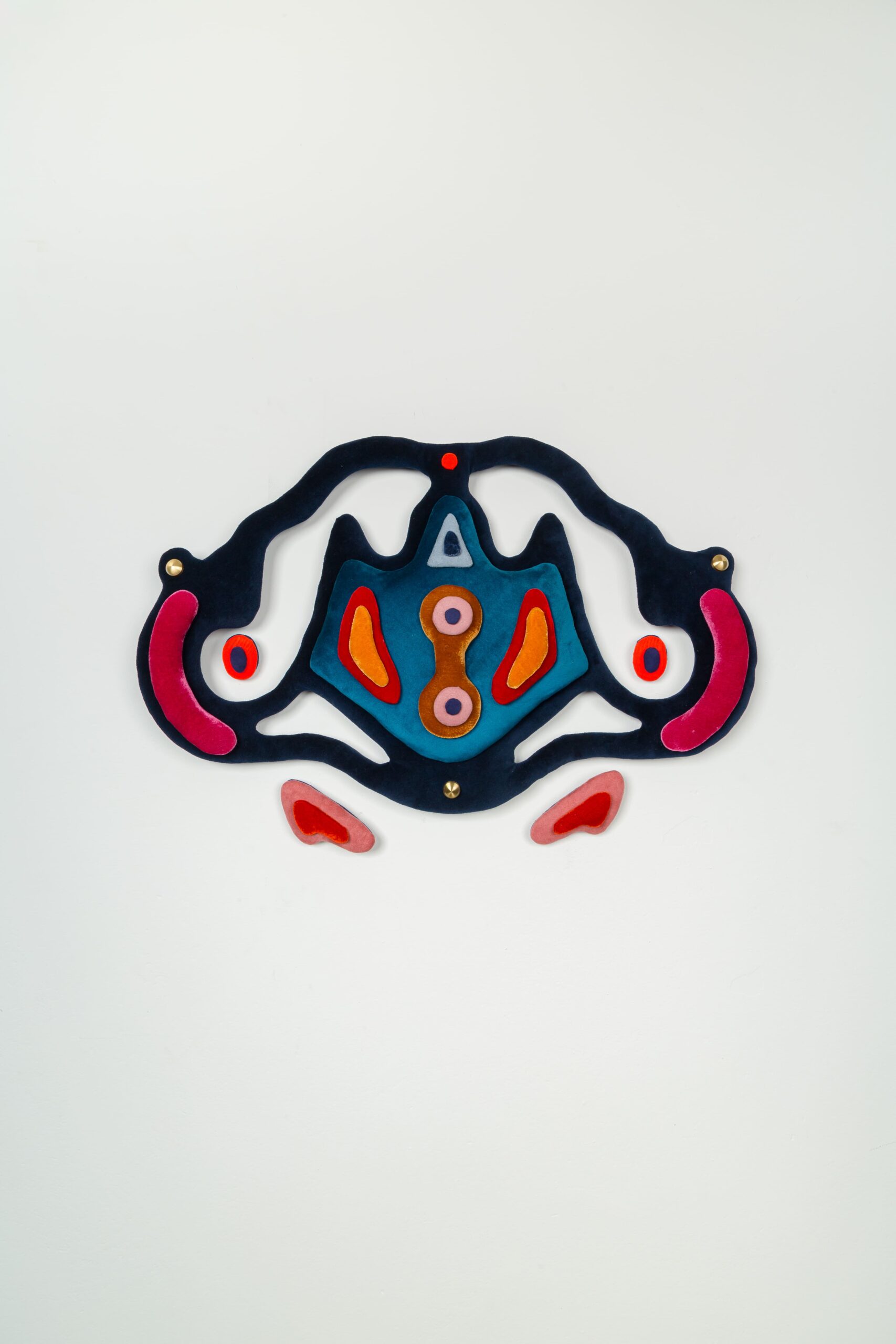Desirée Feldmann
10 August to
09 October 2024
Luis Maluf Galeria
Rua Peixoto Gomide, 1887
Jardins, São Paulo, SP
Imagens Preenchedoras [Filling Images]
Marvellous things sleep under the skin of words
One of the most important genres of medieval Islamic literature dealt with the wonders of creation, or mirabilia. Like Western medieval literature, these manuscripts brought together narratives about countless supernatural beings, but they also described the immensity and diversity of nature: the seas, the rivers, the mountains. They discussed the animal, vegetable and mineral kingdoms while expressing astonishment at the inexplicable, mysterious and fantastic. Treatises on the natural sciences, magic and, why not, poetry were brought together in a single work. Its most popular exponent was written by Zakariyya al-Qazwini (1203-1283), Wonders of Things and Miraculous Aspects of Existing Things.
In her first solo exhibition at Galeria Luis Maluf in São Paulo, artist Desirée Feldmann is presenting a set of new works entitled ‘Filling Images’. In the artist’s words, the title ‘is the name given to the set of drawings I’ve been working on since 2021, and which contain in their essence codes of symbols and colours that form, in an abstract and unconventional way, insignia of protection.’ The exhibition brings together works that result from the artist’s pictorial and material research process through the spatial unfoldings originating from the homonymous series of drawings of these ‘amulet-images’.
This production stems from his enquiries into the field of painting and the remote relationships established over time between humans and the mysteries of nature, which have led them to imagine and represent. Faced with sculptures and objects made of fabric, soft volumes and a colour palette carefully articulated by the organic composition of forms that are born from one another, the exhibition invites us to access some of the senses present in our earliest experiences of things in the world. By primordial experiences we can understand everything from those first memories we have to those remarkable experiences capable of producing awe, enchantment and/or completely re-signifying previous memories.
The works also invite us to visually perceive them gradually: the pieces are constituted by the superimposition of multiple hollow planes. Layers of modular structures made of coloured fabric and upholstery produce concavities and sinuous volumes through accumulation and overlapping. Each shape seems to be born from within another, and from another. One colour is born after another has been repeated a few times within itself, creating a vibrational field of its own. Coloured layers multiply and settle in space, like the pictorial gesture on a flat surface or like the different stratigraphic layers of a mountain in nature, designating the different ages of the Earth.
Little by little, Filling Images offers us the possibility of entering a cosmic dialogue operated in the contact of living bodies with matter, with the mystery of beginnings, endings and the infinite memory of time. We could then, according to this exercise in imagination, enter a space with no defined time, but filled with all the temporal layers imaginable. These sediments produce their own rhythms and temporalities, while the names that designate each work suggest varied images of existing or imaginary beings, bodily sensations, landscapes, cosmic objects, orientation tools, offerings, objects made for protection, objects of devotion.
We come across this restlessness in the face of the time present in things in a text written by the artist in 2022 in which she describes a hike while climbing a mountain. Her text also tells us about the geological process that determines the creation of these formations: mountains are born in cracks, in the encounter between one tectonic plate and another. In other words, mountains are born, according to this image, from the void between two plates.
Imagining the mountain as a living, pulsating entity, or as part (or relative) of an even larger organism would resonate with everything that rests on it. A mountain that was once submerged in a great ocean harbours shells that today seem foreign to the cold, arid landscape they inhabit. The shell carries with it the fossilised memory of an aquatic era, even though it is now far removed from that ancient marine home. Our ability to touch these other temporal, spatial and symbolic dimensions for a moment shows us that fabulation runs through us in the form of questions addressed so often to the invisible. Because ‘every form holds a life’, as Gaston Bachelard would say. And every life needs a magical breath to fill its form, enchanting it, otherwise it wouldn’t be life.
If, for Jorge Luis Borges, writing and reading separate us from the world through the possibility of producing fantastic parallel universes by imagining what doesn’t exist or that we don’t know, we can think that the experience of art also performs the opposite function by connecting us directly to the vital core of the most prosaic things that inhabit everyday life, relationships and the world. Thinking about such Wonders of Things and Miraculous Aspects of Existing Things is also about making oneself available to perceive and implicate oneself in some way with this inevitable, sometimes terrible and also fruitful interdependence that delimits our material and soul existence by intertwining all beings.
Desirée Feldmann thus summons up an enchanted and fertile memory of things, of wonders hidden by the despair of the times, bringing them together in soft, resonant and dispersed forms: a diving goggle, a watch, a shell, a flower as an offering, a mountain viewpoint, a lighthouse, a totem, a Venus and a moon take us on a long journey through words, their worlds and the vibrant matter outside them, close to us. Filling Images claims the possibility of activating the magical meanings present in a primordial production of poetry that shapes the human experience. – Yana Tamayo

1 Newsletter produced by Desirée Feldmann. Text published on 15/12/2022 and accessible at https://open.substack.com/pub/desireefeldmann/p/caderno-de-notas-pag-14-projeto-33?r=4fx97&utm_medium=ios 2 Bachelard, Gaston. The poetics of space. São Paulo: Martins Fontes, 1993. 3 Luiz Antonio Simas and Luiz Rufino tell us ‘the opposite of life is not death, the opposite of life is disenchantment’. In Simas, Luiz Antonio and Rufino, Luiz. Encantamento: on the politics of life. 1st Ed. – Mórula Editorial, 2020.
